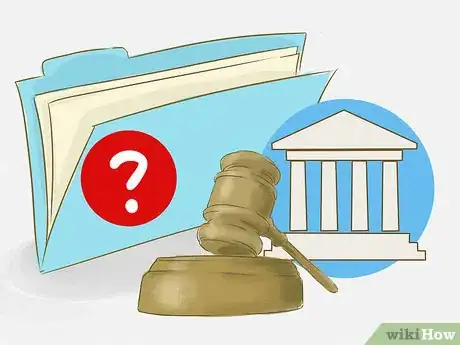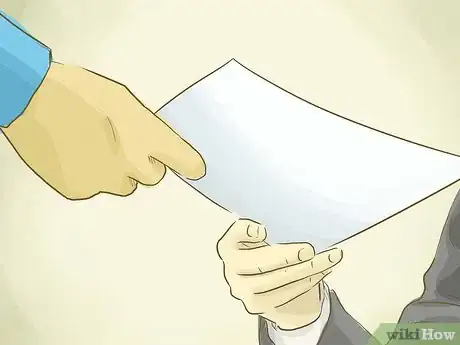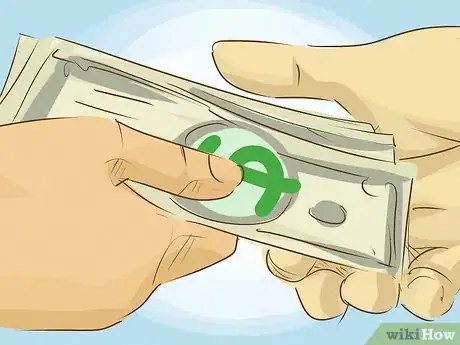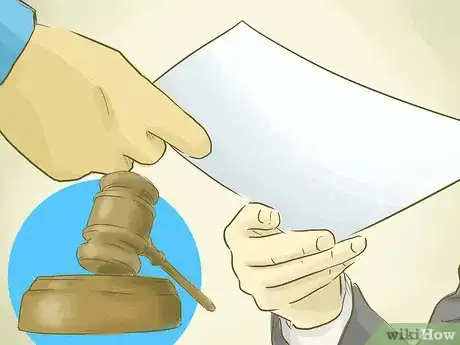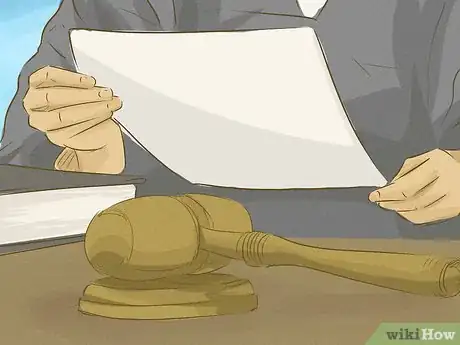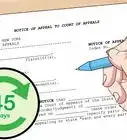This article was co-authored by Clinton M. Sandvick, JD, PhD. Clinton M. Sandvick worked as a civil litigator in California for over 7 years. He received his JD from the University of Wisconsin-Madison in 1998 and his PhD in American History from the University of Oregon in 2013.
This article has been viewed 50,376 times.
Small claims is a special court that resolves disputes quickly and inexpensively. It also has its own rules, which are simple and informal. In San Diego, California, you must first obtain the appropriate paperwork to file for your case either from a small claims court location or from the San Diego courts website. After you have filled out the paperwork, you must take it back to the small claims courthouse, file it with the county clerk, and then pay the applicable filing fees. After you have served your paperwork to the defendant, you can attend the hearing for your small claim lawsuit before a judge.
Steps
Satisfying Preliminary Requirements
-
1Check if you can use small claims court. To sue in small claims court, your claim cannot be more than $5,000 if you are a business or corporation or $10,000 if you are a natural person (which includes sole proprietors).[1]
- If you have a claim that could potentially be worth more than these amounts, you can still sue in small claims court, but you will give up your right to recover any amount over these limits.
- There are also limits on the number of suits you can file. During a single year, you cannot file more than 2 cases in small claims court for more than $2,500 each.
- You must also be 18 or older. If you are under 18, then you will need the court to appoint a guardian ad litem (usually a parent or relative) to represent you in the case.
-
2Make a demand on the defendant. To sue in small claims court, you must make a “demand” for money. Typically, this means that you have asked the defendant to pay you money, and the defendant refused.[2]
- You may also have made a demand for a specific piece of property (e.g., the return of a car).
- You must be the original owner of the claim. In other words, someone cannot assign the right to sue to you. If John owns Mary $800, then you cannot sue John even if Mary makes a contract with you, assigning to you her right to sue John.
Advertisement -
3Understand the limitations of small claims court. You will not have the same rights and protections if you sue in small claims court as opposed to regular civil court. For example, a plaintiff cannot appeal if the defendant wins. However, the defendant may appeal.
- You also cannot be represented by an attorney at trial.[3] If you need legal advice, you should meet with an attorney and take notes to use during your appearance in small claims court.
Filing Your Lawsuit in Court
-
1Locate the correct court. You must sue in the right court at the right location. San Diego has two small claims courts, which service certain specific zip codes. You do not choose a court based on the zip code where you live. Rather, you must pick the court based on:
- Where the defendant lives. Find the zip code where the defendant lives. The court that services that zip code can hear the case.
- Where any business involved in the suit is located. The court that services the zip code where the defendant is located can hear the case.
- Where the damage or accident happened. If you were in an accident in a specific zip code, find the court which serves that zip code. You may bring a case in that small claims court.
- Where the contract was signed or carried out.
-
2Obtain the correct forms. To sue in small claims court, you must fill out specific forms. You may get them by picking them up at one of the small claims courts or by downloading them.
- Visit the San Diego Courts website and click on the “Forms” button. Then click on “Small Claims.”
- Click on the links that read "Plaintiff's Claim and Order to Go to Small Claims Court (Small Claims)," form SC-100 and "Proof of Service (Small Claims)," form SC-104.
- Print the forms directly from your Internet browser, or download them and type inside the PDF.
- If you have questions, you can call the small claims court adviser at 1-858-634-1777 between Monday and Friday. The adviser is available from 8:30 A.M. to 12 P.M. and from 1 P.M. to 4 P.M.
-
3Complete the forms. Using blue or black ink (or by typing into a PDF), you should enter the names and contact information for yourself and the defendant, as well as the amount of money you are owed, and the reason for the money being owed. You will also be prompted for additional information regarding the nature of the small claim lawsuit you are filing.
- It is extremely important that you fill in the defendant’s exact legal name.[4] If the corporation is a business, then check with the state or local licensing agency if you do not know the exact name.
- Make copies of the paperwork for yourself and for the defendants involved in your small claim lawsuit.
-
4Pay the filing fee. The court fees you must pay will vary depending on the amount of money you are suing the defendant for. You can look at this fee schedule. Information on fees for small claims court begins on page 3.
- Ask the court for a fee waiver if you are financially unable to pay the fees associated with filing and service of process.[5]
-
5File your claim. After the clerk has filed your paperwork, you will be provided with the date of your court hearing. If you cannot attend a hearing during the day, then request a hearing on Saturday or during the night.[6]
- Look for your zip code in the list provided to determine the correct court location or division at which to file your paperwork.
-
6Serve copies of the paperwork on the defendant. The defendant must receive notice of your lawsuit. You must serve notice at least 20 days before trial if the defendant lives out of the county (15 if living in the county).[7] There are several options for giving notice:[8]
- Ask the sheriff to make personal service. This will cost a small fee.
- Hire a professional process server to deliver. You will also have to pay the process server.
- A friend or relative who is over 18 and not party to the lawsuit may serve.
- Ask the clerk to send the notice certified mail. It will cost a small fee.
- You cannot give service yourself.
-
7File your Proof of Service with the court. After the defendant is served, the Proof of Service form (signed by the server) must be filed with the court. If a friend served the papers for you, then you must file the signed form and make a copy for yourself.
References
- ↑ http://www.sdcourt.ca.gov/pls/portal/docs/PAGE/SDCOURT/GENERALINFORMATION/FORMS/SMALLCLAIMSFORMS/PKT019.PDF
- ↑ http://www.sdcourt.ca.gov/pls/portal/docs/PAGE/SDCOURT/GENERALINFORMATION/FORMS/SMALLCLAIMSFORMS/PKT019.PDF
- ↑ http://www.sdcourt.ca.gov/pls/portal/docs/PAGE/SDCOURT/GENERALINFORMATION/FORMS/SMALLCLAIMSFORMS/PKT019.PDF
- ↑ http://www.sdcourt.ca.gov/pls/portal/docs/PAGE/SDCOURT/GENERALINFORMATION/FORMS/SMALLCLAIMSFORMS/PKT019.PDF
- ↑ http://www.sdcourt.ca.gov/pls/portal/docs/PAGE/SDCOURT/GENERALINFORMATION/FORMS/SMALLCLAIMSFORMS/PKT019.PDF
- ↑ http://www.sdcourt.ca.gov/pls/portal/docs/PAGE/SDCOURT/GENERALINFORMATION/FORMS/SMALLCLAIMSFORMS/PKT019.PDF
- ↑ http://www.sdcourt.ca.gov/pls/portal/docs/PAGE/SDCOURT/GENERALINFORMATION/FORMS/SMALLCLAIMSFORMS/PKT019.PDF
- ↑ http://www.sdcourt.ca.gov/pls/portal/docs/PAGE/SDCOURT/GENERALINFORMATION/FORMS/SMALLCLAIMSFORMS/PKT019.PDF
- ↑ http://www.courts.ca.gov/documents/sc104b.pdf
